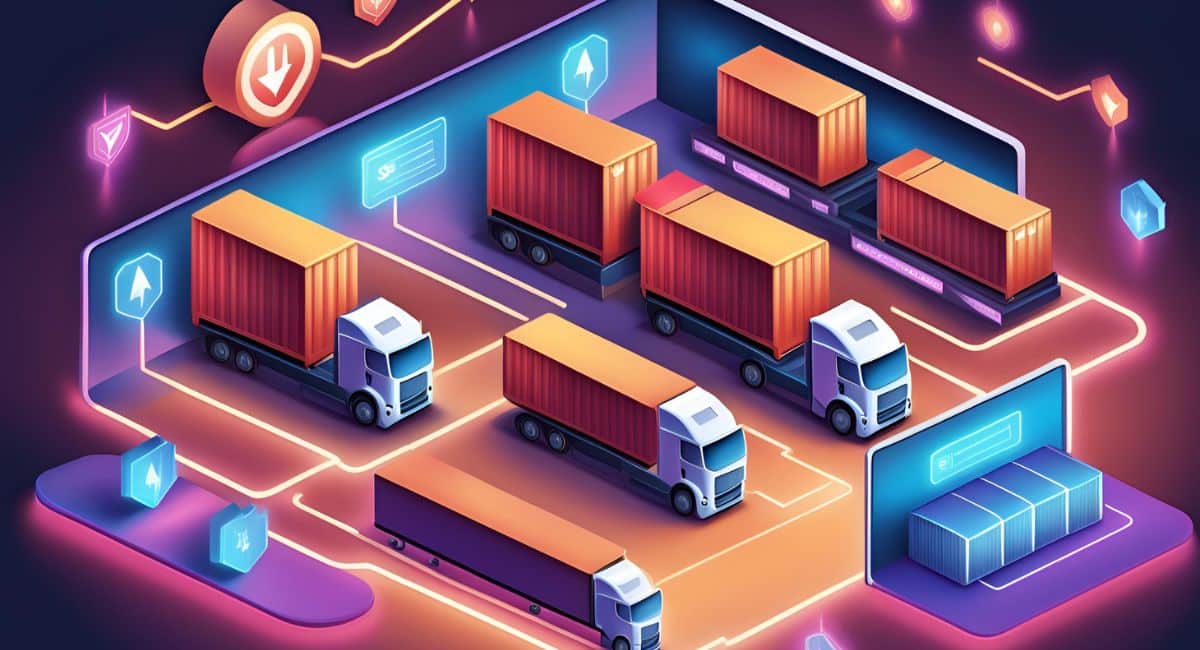Inbound logistics involves receiving, warehousing, and managing incoming supplies. While the Outbound logistics covers order processing, packaging, and delivery of finished goods.
Logistics is a fundamental component of any successful business, ensuring that products move efficiently from suppliers to customers. Understanding both inbound and outbound logistics is crucial for optimizing supply chain management.
This comprehensive guide explores inbound and outbound logistics, their definitions, differences, importance, processes, and common challenges, with a focus on how inventory management systems can enhance these processes.
Key Takeaways
|
Table of Content:
Table of Content

What are Inbound and Outbound Logistics?
Understanding the definitions of inbound and outbound logistics is the first step in mastering effective supply chain management. These two components play distinct yet interconnected roles in ensuring that products are delivered efficiently.
With a clear grasp of these concepts, we can explore how their core functions differ and how they contribute to overall logistics effectiveness.
Definition of Inbound Logistics
Inbound logistics refers to the processes involved in receiving, warehousing, and managing incoming supplies. This includes the transportation of raw materials from suppliers, their arrival at warehouses, and the storage of these materials until they are needed.
Effective inbound logistics ensures that products are available for production or sale without unnecessary delays. It also involves managing inventory levels to avoid overstocking or stockouts, which can disrupt production schedules and increase costs.
In Singapore, using an inventory management system is crucial for streamlining inbound logistics. These systems automate the tracking of incoming supplies, manage stock levels, and provide insights into inventory needs based on historical data and market trends.
By integrating such a system, businesses can optimize their warehouse space, reduce manual errors, and ensure a steady flow of materials, leading to more efficient operations.
Definition of Outbound Logistics
Outbound logistics encompasses the activities associated with the movement of finished goods from the warehouse to the end customer. This includes order processing, packaging, shipping, and delivery.
Efficient outbound logistics is crucial for meeting customer expectations and ensuring timely deliveries. It involves coordinating with various carriers, managing shipping routes, and handling returns if necessary. Inventory management software plays a significant role in outbound logistics by automating and optimizing the order fulfillment process.
Such software helps track inventory levels in real-time, manage shipping schedules, and ensure that the right products are shipped to the correct destinations. This integration improves the accuracy of order processing and enhances customer satisfaction by reducing errors and delivery times.
Differences Between Inbound and Outbound Logistics
Having established the foundational concepts, it’s essential to delve into the differences between inbound and outbound logistics. Recognizing these distinctions helps in understanding their specific functions and objectives within the supply chain.
By examining their unique roles, we can better appreciate their contributions to operational efficiency and how they influence each other.
Core Functions and Objectives
The core functions of inbound logistics focus on managing the flow of incoming materials. This includes activities such as receiving shipments, inspecting goods, storing them in warehouses, and coordinating with suppliers.
The primary objective is to ensure that the right materials are available at the right time, which helps minimize production delays and optimize manufacturing processes. On the other hand, outbound logistics deals with the distribution of finished goods to customers.
Its core functions include processing customer orders, preparing goods for shipment, managing shipping logistics, and handling returns. The primary goal is to deliver products to customers efficiently and accurately, meeting their expectations and maintaining a positive relationship with them.
Key Comparisons
Inbound logistics involves activities related to inventory management, such as receiving and warehousing supplies. The objective is to ensure that materials are available for production or sale without disruption.
Outbound logistics, however, focuses on the delivery of finished products to customers. This includes managing shipping routes and coordinating with carriers to ensure timely and accurate deliveries.
The use of inventory management systems enhances both inbound and outbound logistics. For inbound logistics, these systems help track incoming supplies, optimize storage, and manage stock levels. For outbound logistics, they streamline order processing, track shipments, and manage inventory in real-time.
This integration ensures that businesses can efficiently manage their entire supply chain, from receiving materials to delivering products to customers.
Importance of Effective Logistics Management
With a clear understanding of the differences between inbound and outbound logistics, we can now appreciate why effective logistics management is crucial. Proper management ensures that both inbound and outbound processes are optimized, which in turn enhances overall supply chain efficiency.
Let’s examine the impact of efficient logistics management on supply chain performance and customer satisfaction.
Impact on Supply Chain Efficiency
Effective logistics management is crucial for optimizing the supply chain. In inbound logistics, efficient handling of incoming supplies reduces production delays and minimizes inventory holding costs. By using an inventory management system, businesses can track materials more accurately, forecast needs, and avoid both overstocking and stockouts.
In outbound logistics, effective management ensures timely deliveries and accurate order fulfillment, which helps maintain a smooth flow of goods from the warehouse to the customer.
An inventory management system can provide real-time insights into stock levels and order statuses, enabling businesses to respond quickly to changes in demand and improve overall supply chain efficiency.
For businesses looking to streamline their logistics operations and enhance their inventory management, exploring a robust inventory management system is essential. These systems offer advanced features to optimize both inbound and outbound logistics, helping you achieve greater operational efficiency and customer satisfaction.
Interested in learning more about how an inventory management system can transform your logistics processes? Check out the flexible pricing plans and discover the best solution for your business needs.
Effects on Customer Satisfaction
Customer satisfaction is greatly influenced by the efficiency of logistics management. For inbound logistics, this means ensuring that production processes are not disrupted by delays in material availability. By optimizing inventory levels and managing supplies effectively, businesses can ensure timely production and avoid disruptions.
For outbound logistics, customer satisfaction hinges on timely and accurate deliveries. Inventory management software helps businesses track orders, manage shipping schedules, and ensure that customers receive their products as promised.
By improving the accuracy and speed of order fulfillment, businesses can enhance customer satisfaction and build stronger customer relationships.
How Inbound and Outbound Logistics Work
Building on the importance of effective logistics management, it’s crucial to understand how inbound and outbound logistics function in practice. Exploring the specific processes involved will provide insights into how these operations are carried out daily and how they can be improved.
This understanding will help in applying best practices to streamline both inbound and outbound logistics.
Processes Involved in Inbound Logistics
Inbound logistics involves several key processes:
- Receiving: Materials are received from suppliers and inspected for quality and quantity.
- Warehousing: Received goods are stored in warehouses until needed.
- Inventory Management: Inventory levels are monitored and managed to ensure an adequate supply of materials.
An inventory management system plays a crucial role in these processes by automating tracking, managing stock levels, and providing insights into inventory needs. This technology helps businesses streamline operations, reduce manual errors, and ensure that materials are available when needed.
Processes Involved in Outbound Logistics
Outbound logistics includes:
- Order Processing: Orders are received, processed, and prepared for shipment.
- Packaging: Products are packaged for shipping, ensuring they are protected during transit.
- Shipping: Goods are shipped to customers, with shipping routes and carriers managed to ensure timely delivery.
Inventory management software supports outbound logistics by providing real-time tracking of inventory levels, managing shipping schedules, and automating order fulfillment processes. This technology helps businesses optimize their shipping operations and improve customer satisfaction.
Challenges in Managing Inbound and Outbound Logistics
Even with a thorough understanding of how inbound and outbound logistics work, it’s important to address the common challenges faced in managing these processes. Identifying these challenges allows businesses to develop strategies to overcome them and improve overall efficiency.
We’ll discuss typical issues encountered in both areas and explore potential solutions to mitigate these challenges.
Common Challenges in Inbound Logistics
Managing inbound logistics can present several challenges:
- Supply Chain Disruptions: Unforeseen disruptions in the supply chain can delay the arrival of materials.
- Inventory Management: Maintaining optimal stock levels can be challenging, especially with fluctuating demand.
- Supplier Coordination: Coordinating with multiple suppliers can lead to complications in managing delivery schedules.
Inventory management systems can help address these challenges by providing real-time visibility into inventory levels, forecasting demand, and improving coordination with suppliers. This technology helps businesses mitigate disruptions and maintain a steady flow of materials.
Common Challenges in Outbound Logistics
Outbound logistics also faces challenges, such as:
- Order Accuracy: Ensuring that the correct products are shipped to the right customers can be challenging.
- Shipping Delays: Delays in shipping can impact customer satisfaction and affect business reputation.
- Returns Management: Handling returns efficiently is crucial for maintaining customer satisfaction and managing inventory levels.
Inventory management software can help overcome these challenges by automating order processing, tracking shipments, and managing returns. This technology enhances the efficiency of outbound logistics and ensures a positive customer experience.
Conclusion
Inbound and outbound logistics are essential components of effective supply chain management. By understanding the differences between these processes and leveraging technology such as inventory management systems, businesses can optimize their logistics operations, improve efficiency, and enhance customer satisfaction.
Whether managing incoming supplies or distributing finished goods, effective logistics management is key to achieving a seamless and successful supply chain.
To take your logistics management to the next level, consider using HashMicro’s Inventory Management Software. Our solutions are designed to streamline both inbound and outbound logistics processes, providing real-time insights and automation to ensure that your operations run smoothly and efficiently.
With our software, you can optimize inventory levels, manage shipments effectively, and enhance overall supply chain performance. Additionally, we offer a free demo of our inventory management software by clicking the banner below.
Frequently Asked Questions
-
What is an inbound shipment?
Inbound shipping involves shipments arriving at a business, including activities like procurement, manufacturing, assembly, storage, and inventory management. It often involves working with suppliers and vendors, frequently involving international logistics for many companies.
-
What is an outbound freight?
Outbound freight refers to the shipment of finished products from a business to the distribution channel or directly to the customer. Once a product is manufactured, it is dispatched to reach the end consumer.
-
What are the three types of logistics?
The three types of logistics are inbound, outbound, and reverse logistics.





































